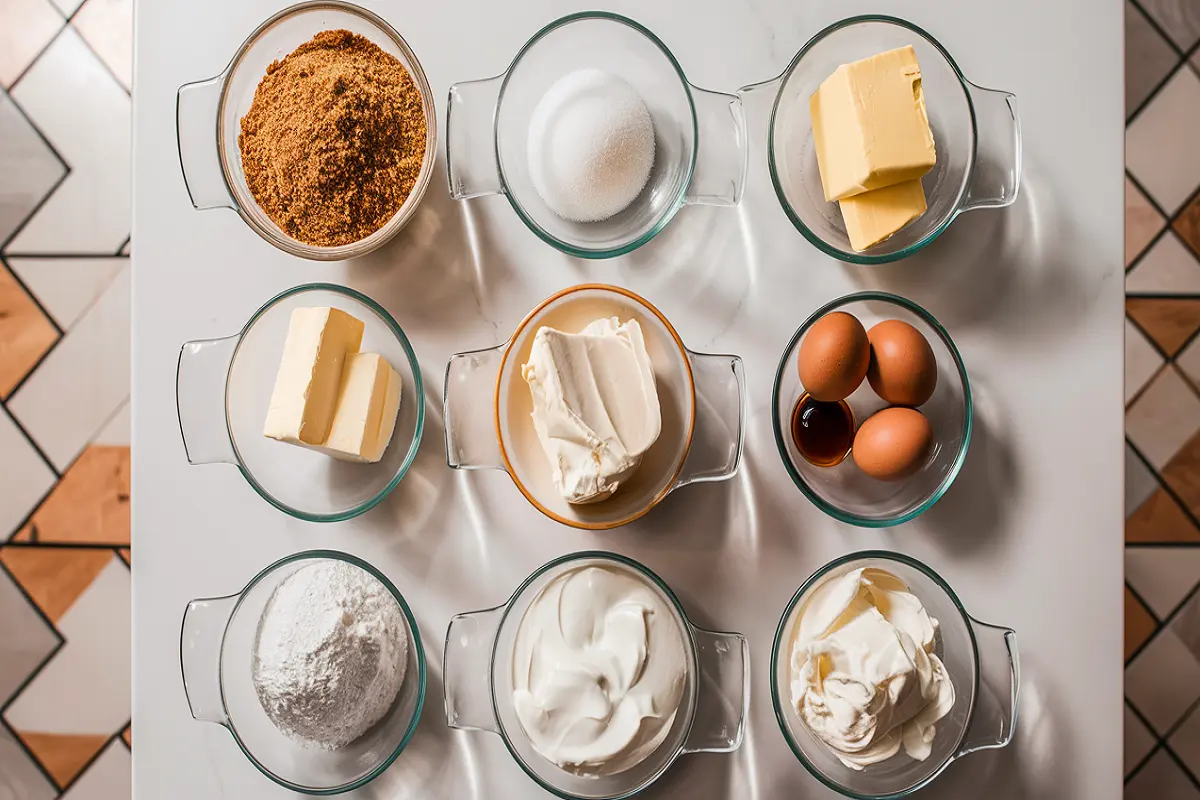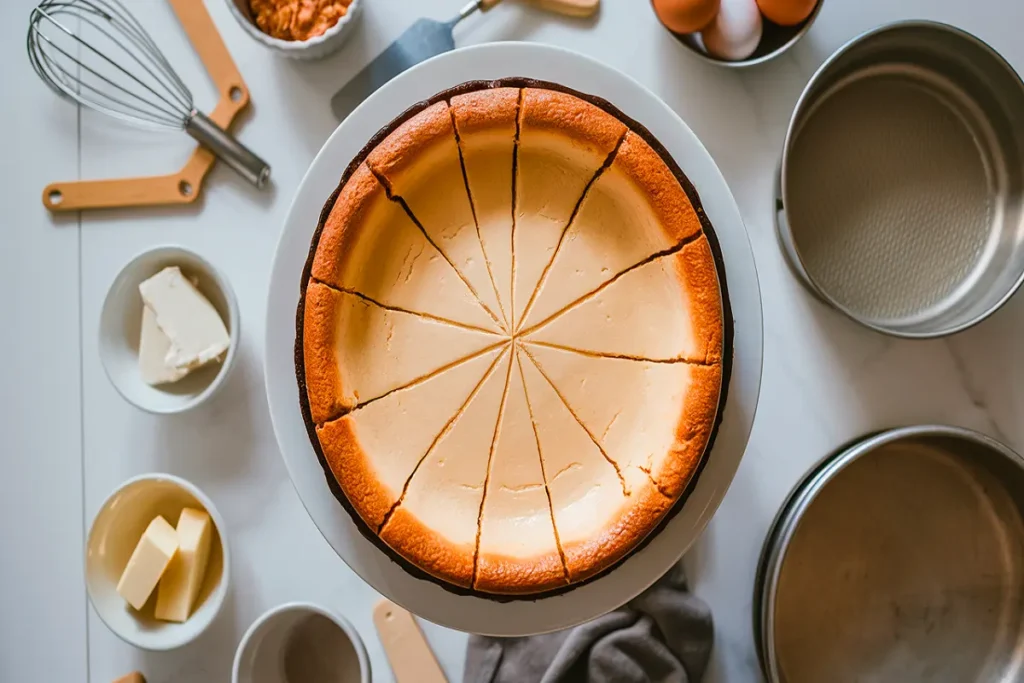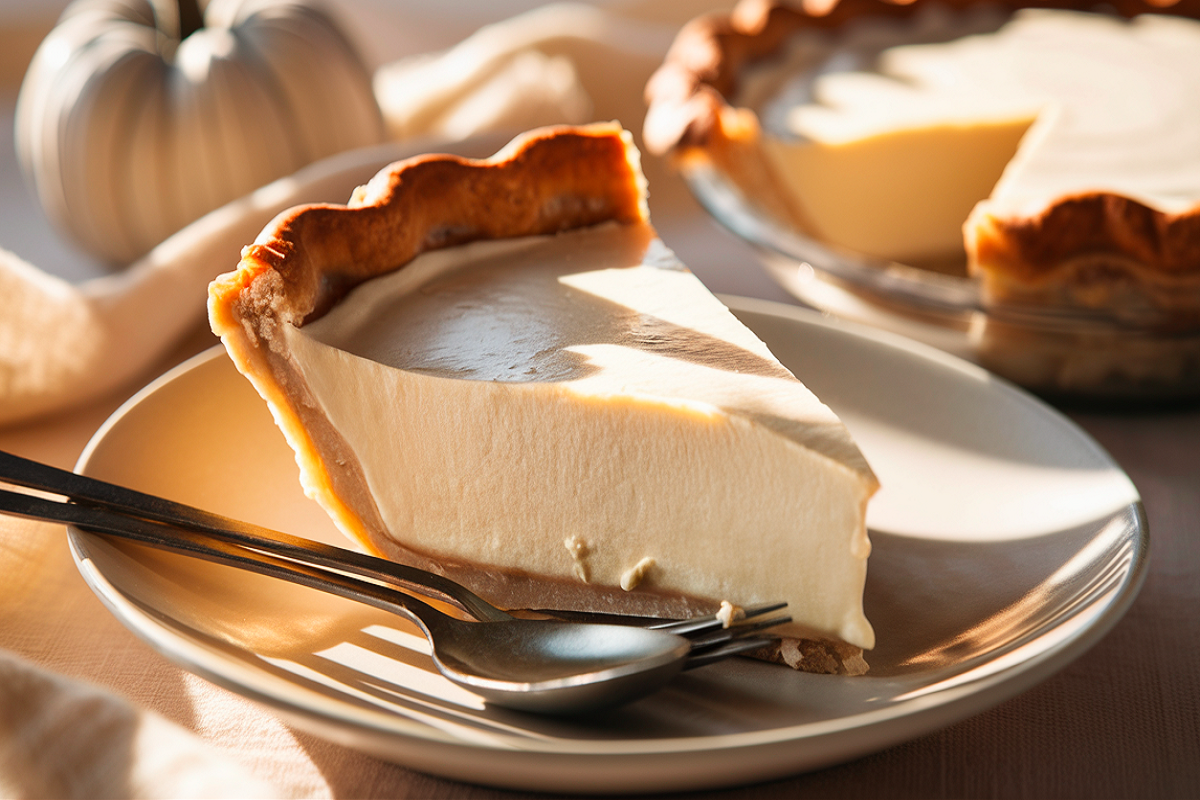Philadelphia cheesecake is a timeless classic known for its rich, creamy texture and subtly sweet flavor. Made with the iconic Philadelphia cream cheese, this dessert is perfect for any occasion, from special celebrations to casual gatherings. In this comprehensive guide, we will walk you through each step of the Philadelphia cheesecake recipe, from gathering ingredients to baking and serving. Whether you’re an experienced baker or just starting, this detailed guide will ensure your cheesecake comes out perfectly every time.
Ingredients for Philadelphia Cheesecake Recipe

The ingredients used in the Philadelphia cheesecake recipe play a critical role in achieving its signature smooth, velvety texture and delightful flavor. Below is a list of the ingredients along with their purpose in the recipe and potential substitutions for those with dietary restrictions or preferences.
The Cheesecake Crust:
- Graham Cracker Crumbs (1 ½ cups): These crumbs form the base of the crust, adding a slight crunch and sweetness to contrast the smooth filling. If you prefer, you can substitute graham cracker crumbs with crushed digestive biscuits or crushed vanilla wafers. For a gluten-free option, use gluten-free graham crackers.
For those looking for a gluten-free option, you can try our delicious Gluten-Free Strawberry Cake, which is a great alternative for those with dietary restrictions.
- Granulated Sugar (¼ cup): Sugar adds sweetness to the crust and helps bind the crumbs together. If you’d like a less sweet crust, you can reduce the sugar slightly or use brown sugar for a deeper flavor.
- Melted Butter (6 tbsp): Butter acts as a binder for the crust and adds richness. You can substitute with margarine or a plant-based butter if you prefer a dairy-free alternative.
For the Cheesecake Filling:
- Philadelphia Cream Cheese (4 packages, 8 oz each, softened): The cream cheese is the heart of the cheesecake, providing the creamy texture and tangy flavor that the Philadelphia cheesecake recipe is famous for. Always use full-fat cream cheese for the best texture, as low-fat versions can result in a grainy cheesecake. You can substitute with other full-fat cream cheese brands, but Philadelphia cream cheese is the classic choice.
- Granulated Sugar (1 ¼ cups): Sugar sweetens the cheesecake filling while helping to balance the tanginess of the cream cheese. You can use a slightly lesser amount if you prefer a less sweet cheesecake, or use superfine sugar for a smoother texture.
- Vanilla Extract (1 tsp): Vanilla extract enhances the flavor of the cheesecake, adding warmth and depth. You can substitute with almond extract for a different flavor profile, but use sparingly as almond extract is stronger than vanilla.
- Eggs (4 large, room temperature): Eggs help to bind the filling together and contribute to the creamy texture. They also add richness and color to the cheesecake. Be sure to use room-temperature eggs to ensure a smooth batter. You can use flax eggs as a vegan substitute, though this will affect the texture.
- Sour Cream (1 cup, room temperature): Sour cream adds extra creaminess and a slight tang to the filling. It also helps keep the cheesecake moist. You can substitute with plain Greek yogurt for a similar effect.
Step-by-Step Guide to Making Philadelphia Cheesecake Recipe
1: Prepare the Crust
- Preheat the Oven: Preheat your oven to 325°F (160°C). Greasing the bottom of a 9-inch springform pan will ensure the crust doesn’t stick.
- Mix the Crust Ingredients: In a medium bowl, combine the graham cracker crumbs, sugar, and melted butter. Stir until the crumbs are evenly coated and the mixture resembles wet sand.
- Form the Crust: Press the graham cracker mixture evenly into the bottom of the greased springform pan. Use the back of a spoon or the bottom of a glass to pack it tightly.
- Bake the Crust: Place the crust in the preheated oven and bake for 10 minutes. This step helps the crust set and become slightly crisp. Remove the crust from the oven and let it cool while you prepare the filling.
2: Prepare the Cheesecake Filling
- Beat the Cream Cheese: In a large mixing bowl or the bowl of a stand mixer, beat the softened Philadelphia cream cheese on medium speed until smooth and creamy, about 3-4 minutes. Make sure to scrape down the sides of the bowl as needed to ensure there are no lumps.
- Add the Sugar and Vanilla: Gradually add the sugar while continuing to beat the cream cheese. Mix until the sugar is fully incorporated and the filling is smooth. Add the vanilla extract and mix until combined.
- Incorporate the Eggs: Add the eggs, one at a time, beating on low speed after each addition. Be careful not to overmix once the eggs are added, as this can cause the cheesecake to crack during baking.
- Fold in the Sour Cream: Using a spatula, gently fold the sour cream into the cream cheese mixture. The sour cream will add an extra layer of creaminess to the filling.
3: Assemble and Bake the Cheesecake
- Pour the Filling Over the Crust: Pour the prepared cheesecake filling into the cooled crust, smoothing the top with a spatula.
- Bake the Cheesecake: Place the springform pan in the preheated oven and bake for 55-60 minutes, or until the center is almost set but still slightly jiggly. The edges should be slightly puffed and lightly golden.
- Cool the Cheesecake: Turn off the oven and crack the door open slightly, allowing the cheesecake to cool slowly in the oven for about an hour. This helps prevent cracking.
- Refrigerate the Cheesecake: Once the cheesecake has cooled to room temperature, transfer it to the refrigerator and let it chill for at least 4 hours or overnight. Chilling allows the cheesecake to set fully and develop its flavor.
4: Serve the Cheesecake
- Remove from Pan: Once the cheesecake has chilled completely, run a knife around the edge of the springform pan to release the cheesecake. Carefully remove the outer ring of the pan.
- Garnish and Serve: Slice the cheesecake with a sharp knife, wiping the knife between each slice for clean cuts. Serve the cheesecake as is, or garnish with fresh fruit, chocolate shavings, or a drizzle of caramel or fruit sauce.
Tips for Achieving the Best Philadelphia Cheesecake Recipe

Making the perfect Philadelphia cheesecake recipe requires attention to detail and a few helpful tips:
1: Use Room Temperature Ingredients
To achieve a smooth, lump-free cheesecake filling, ensure that all your ingredients—especially the cream cheese, eggs, and sour cream—are at room temperature before mixing. Cold ingredients can lead to a lumpy batter and uneven baking.
2: Don’t Overmix the Batter
Once the eggs are added, mix the batter on low speed and avoid overmixing. Overmixing can introduce too much air into the batter, causing the cheesecake to rise and crack during baking.
3: Water Bath for a Crack-Free Cheesecake
For an even smoother cheesecake and to avoid cracks, consider baking your cheesecake in a water bath. Simply wrap the bottom of your springform pan in aluminum foil, place it in a larger roasting pan, and fill the roasting pan with hot water until it reaches halfway up the sides of the cheesecake pan.
4: Gradual Cooling to Prevent Cracks
After baking, allow the cheesecake to cool slowly in the oven with the door cracked open. This helps prevent drastic temperature changes, which can cause cracks on the surface of the cheesecake.
Tip 5: Chill for the Best Flavor and Texture
Cheesecake needs time to chill and set properly. While it may be tempting to slice into it right away, letting it chill in the refrigerator for at least 4 hours, or overnight, will give you the best results.
Frequently Asked Questions (FAQs)
1. Can I make Philadelphia cheesecake ahead of time?
Yes, the Philadelphia cheesecake recipe is perfect for making ahead of time. In fact, it’s best when made a day in advance to allow for proper chilling and setting. Simply bake and refrigerate the cheesecake up to 2 days before serving.
2. Can I freeze Philadelphia cheesecake?
Absolutely! To freeze, let the cheesecake cool completely and chill in the refrigerator for at least 4 hours. Once chilled, wrap the cheesecake tightly in plastic wrap and aluminum foil, then place it in a freezer-safe bag. Cheesecake can be frozen for up to 2 months. To thaw, place it in the refrigerator overnight.
3. What can I use as a topping for Philadelphia cheesecake?
You can top your Philadelphia cheesecake with a variety of delicious toppings. Popular options include fresh berries, chocolate ganache, caramel sauce, lemon curd, or even a dollop of whipped cream.
4. Why did my cheesecake crack?
Cheesecake can crack for several reasons, including overmixing the batter, baking at too high of a temperature, or cooling the cheesecake too quickly. To prevent cracking, avoid overmixing, bake at a steady temperature, and allow the cheesecake to cool gradually in the oven after baking.
5. How do I know when my cheesecake is done?
Your cheesecake is done baking when the edges are set, but the center is still slightly jiggly. It will continue to firm up as it cools. Avoid overbaking, as this can lead to a dry texture.
6. Can I use low-fat cream cheese in this recipe?
While you can use low-fat cream cheese, it may affect the texture of the cheesecake, resulting in a less creamy and smooth filling. Full-fat cream cheese is recommended for the best results in the Philadelphia cheesecake recipe.
7. Can I make this cheesecake gluten-free?
Yes, to make a gluten-free Philadelphia cheesecake, simply substitute the graham cracker crumbs with gluten-free graham crackers or another gluten-free alternative. Be sure to check that all other ingredients are gluten-free as well.
8. How long should I chill the cheesecake before serving?
For the best texture and flavor, the cheesecake should chill for at least 4 hours in the refrigerator, but overnight is even better. Chilling helps the cheesecake firm up and enhances its flavor.
9. What is the best way to slice cheesecake cleanly?
To slice your cheesecake cleanly, use a sharp knife that’s been dipped in hot water and wiped clean between each slice. This prevents the filling from sticking to the knife and ensures clean cuts.
You can also explore the differences between cheesecakes by reading about the Difference Between New York and Philadelphia Style Cheesecake.
Conclusion
The Philadelphia cheesecake recipe is a classic dessert that never goes out of style. Its smooth, creamy texture combined with a rich, tangy flavor makes it a favorite at any gathering. Whether you’re serving it plain or with your favorite toppings, this cheesecake is sure to impress. By following these detailed steps and tips, you’ll achieve a perfectly baked cheesecake every time. Its versatility and deliciousness make it a go-to dessert for any occasion.
For a detailed overview of the history and variations of cheesecake, you can visit Wikipedia’s Cheesecake Page, which provides comprehensive information on this classic dessert.
If you’re looking for more delicious cheesecake recipes .

